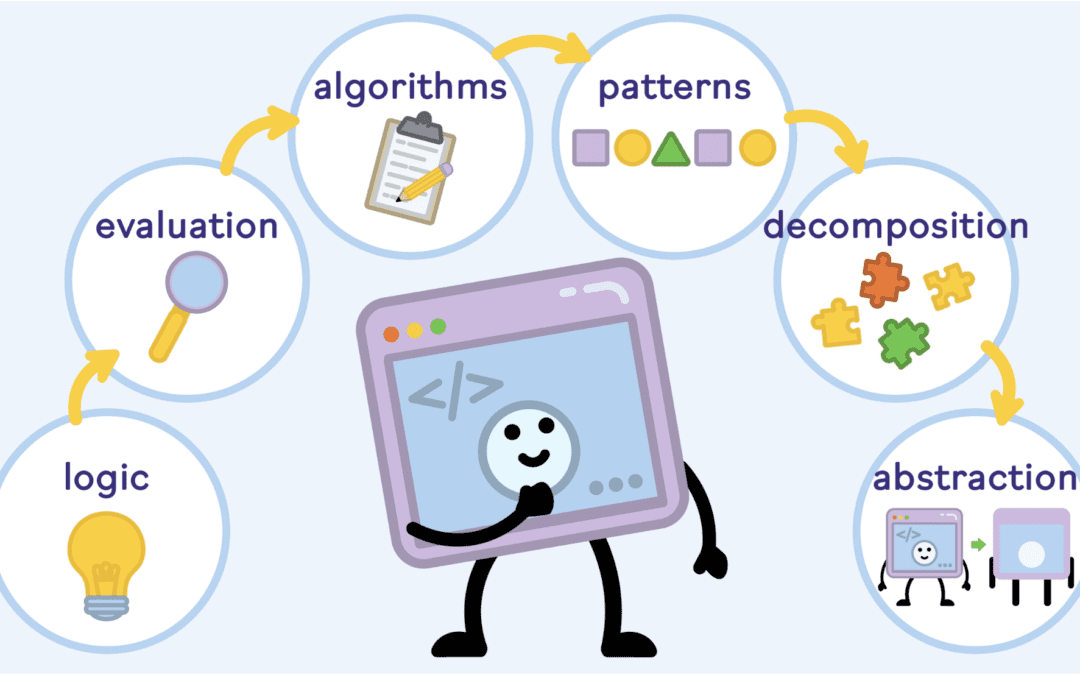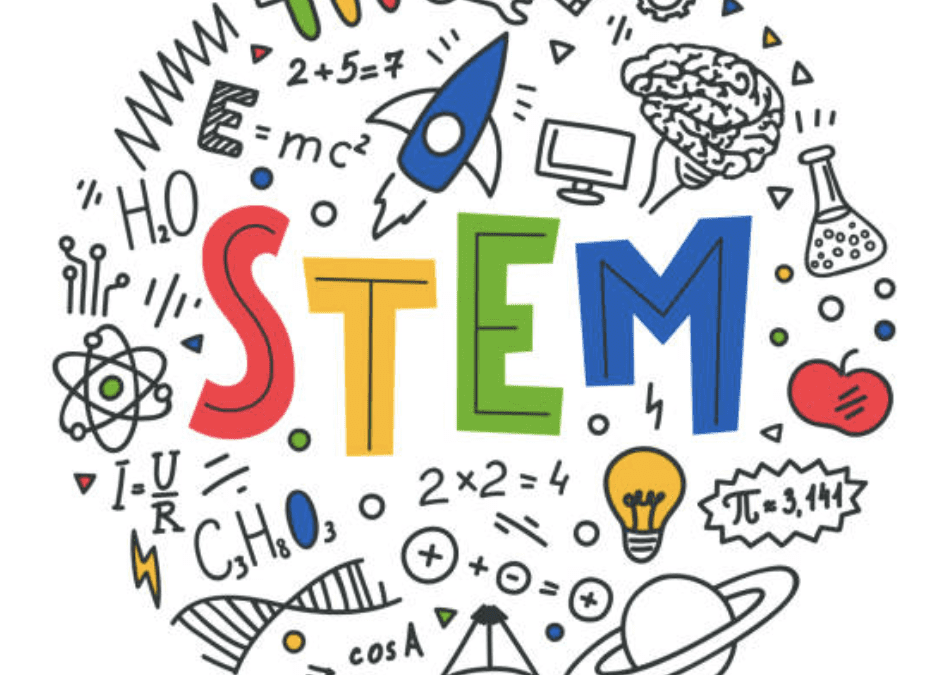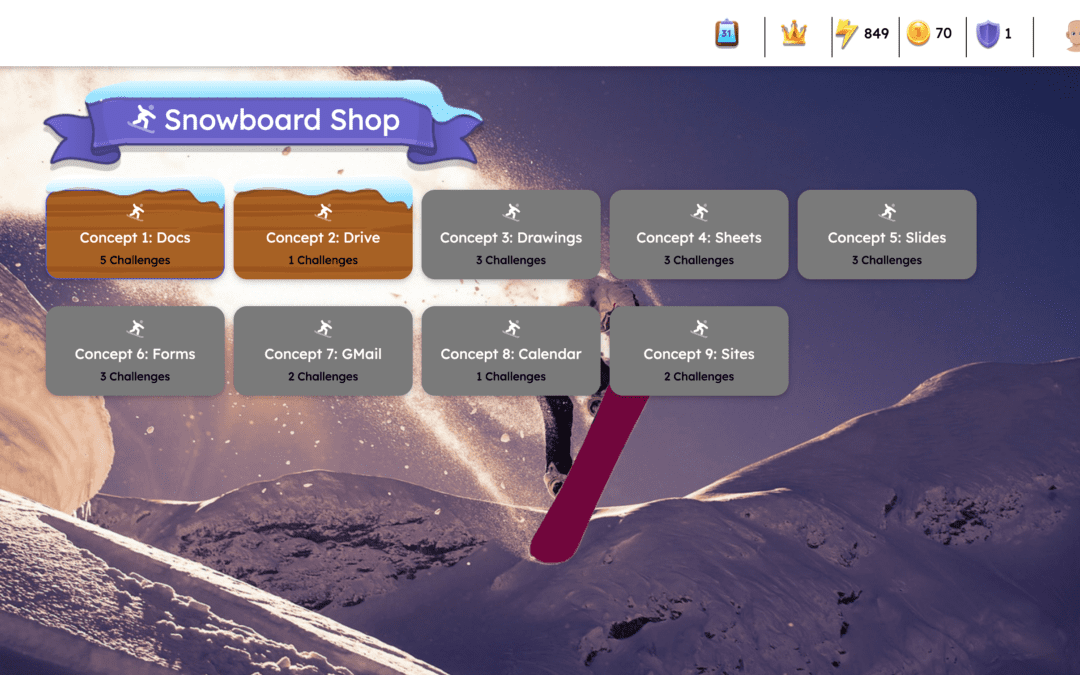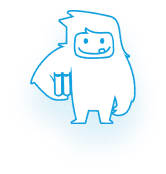

If your district is looking to emphasize STEM beyond math and science, you may want to expand your middle school computer curriculum further. Basic coding, HTML, and computational thinking lessons can help students develop widely applicable skills and spark an interest in STEM careers.
Here are the top five things to include in your middle school computer curriculum:
Digital citizenship is the concept of using the internet responsibly. It covers a wide range of topics, like how to keep yourself and your personal information safe, how to avoid plagiarism, what to do about cyberbullying, and how to manage your digital footprint.
While many teenagers are more tech-savvy than their parents, they may not have learned key elements of internet safety and ethics. Your middle school students can definitely benefit from an up-to-date digital citizenship curriculum.

Google Workspace, formerly known as G Suite or Google Apps, is an essential toolset for students today. As your middle school students progress to high school, then college and the workforce, they will be expected to know how to create slide presentations, work with spreadsheets, share and organize files, collect information with digital forms, and even build simple websites.
Some of your middle school students may already know the basics of Google Workspace tools, but others may not. All of your students can benefit from spending enough time with these tools to become power users.
We recommend choosing a digital literacy curriculum that allows students to practice advanced Google Workspace skills. It’s important to check that your digital curriculum is up to date, as some of this technology has changed over the past few years.
Computational thinking isn’t just a computer skill: it’s an approach to problem-solving that helps with nearly any academic subject or real-life project. Teaching computational thinking not only prepares students for coding and debugging, but also gives them a leg up in solving math problems, writing book reports, and dealing with life problems.
There are four elements of computational thinking: Decomposition, Pattern Recognition, Abstraction, and Algorithmic Thinking. Your middle school computational thinking curriculum should help students practice each of these skills, ideally with real-world problems.
Middle school is a good time to introduce kids to coding, especially if they didn’t start learning in elementary school. Coding is an essential skill in many in-demand jobs today. More than that, though, coding teaches life skills like problem-solving, persistence, and confidence.
At Yeti Academy, we’ve made learning to code more fun than ever. Yeti Code’s single- and multi-player coding games get middle school students excited to practice. Students can go head to head in virtual coding competitions, and teachers can even create new levels of their own for their students.
Web coding with HTML 5 is not only a marketable skill, but also a lot of fun for some kids. Many middle schools today are offering elective courses in coding, web design, and web development for students with an interest in STEM.
If your school or district isn’t already teaching HTML 5, you may want to consider adding a web coding module to your middle school computer curriculum. Your students will love seeing their projects come to life as they practice their coding, computation thinking, and problem-solving skills!
Yeti Academy is an easy-to-use STEM learning platform for K-12 schools and districts. Our interactive learning modules cover coding, digital citizenship, Google Workspace, computational thinking, life sciences, keyboarding, and more.
Each Yeti Academy module includes all the teacher resources you need, from lesson plans and slide shows to activities and tests. Best of all, our program is designed to work well in classroom, remote, or hybrid learning environments.

In today's rapidly evolving digital landscape, the ability to think computationally is more crucial than ever before. From problem-solving to innovation, these skills equips students with tools preparing them for success in a variety of career paths. In this blog.

In a world where technology reigns supreme and innovation is the name of the game, STEM education stands as a beacon of empowerment for students. Let's dive into the exhilarating realm of STEM (Science, Technology, Engineering, and Mathematics) and uncover the.

Embark on a cutting-edge educational journey with Yeti Academy! We're not just reshaping learning; we're revolutionizing it with Project-Based Learning (PBL) for Google Workspace, tailored for grades 3-12. In our digital age, Google Workspace skills aren't just a.

Yeti Academy provides K-12 teachers, schools, and districts an easy to use and resource rich platform and students an exciting and relevant STEM learning experience. Categories of learning include: Coding, Keyboarding, Digital Literacy, Digital Citizenship, Computational Thinking, Science and more.